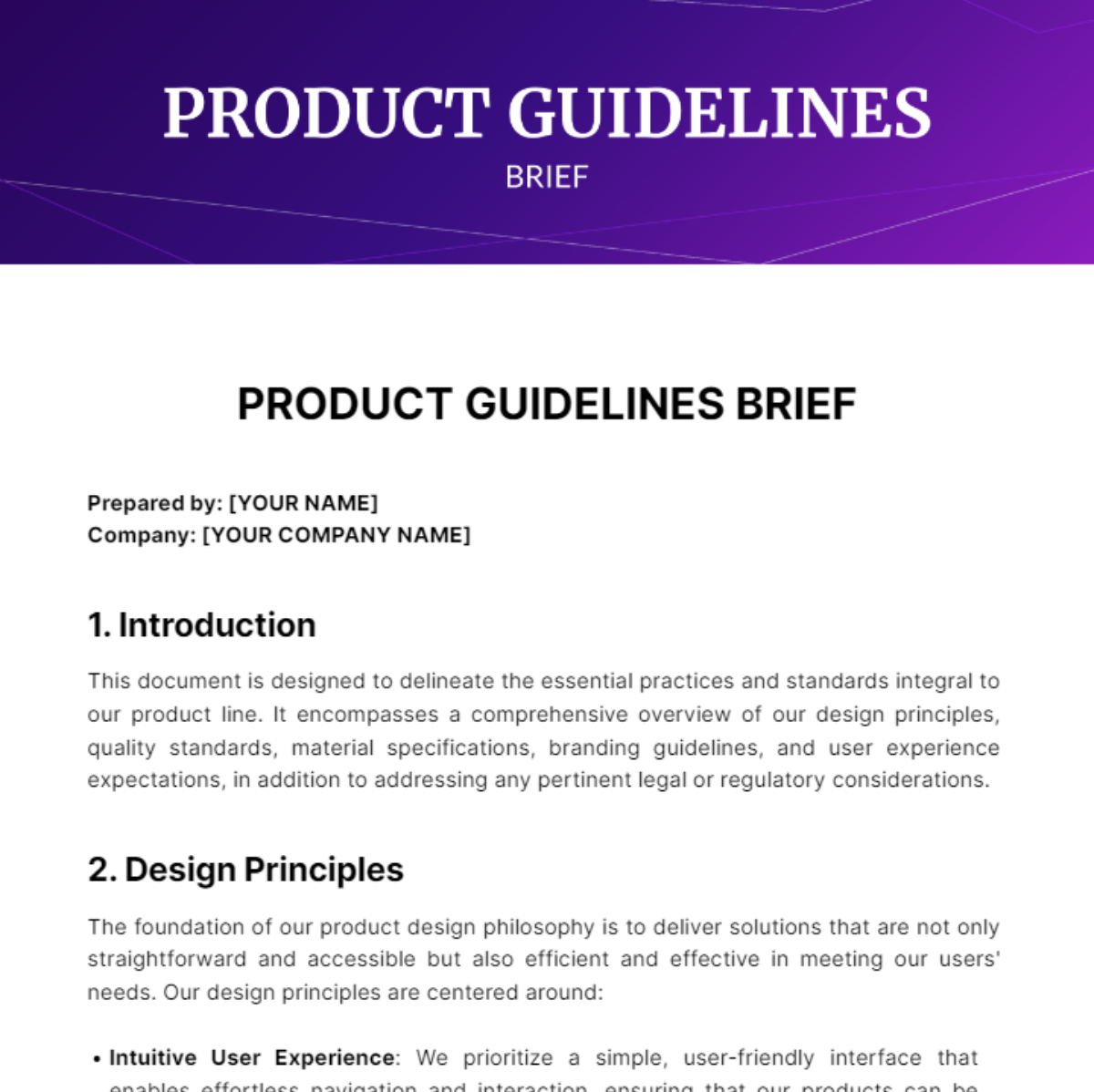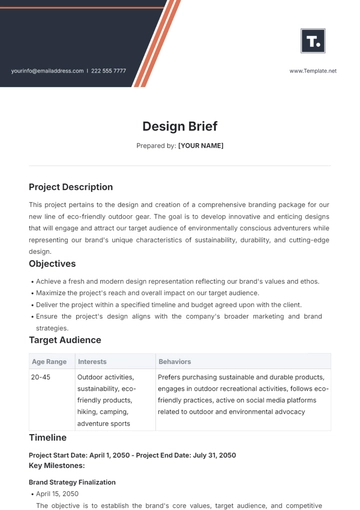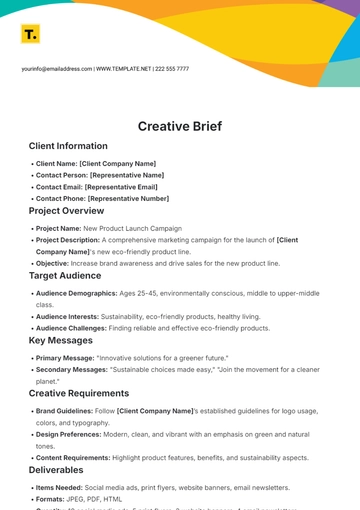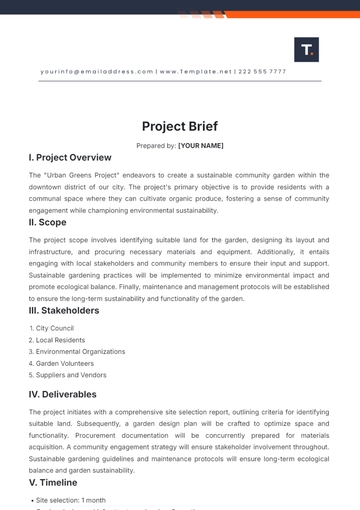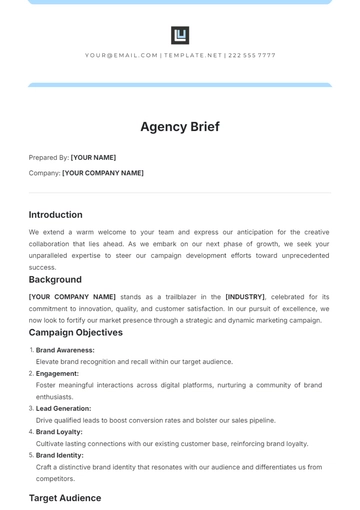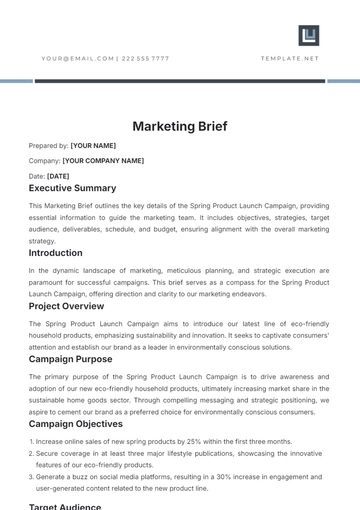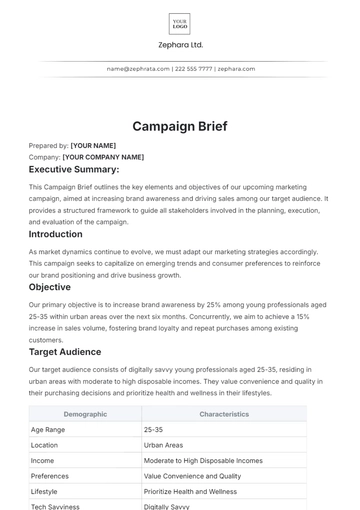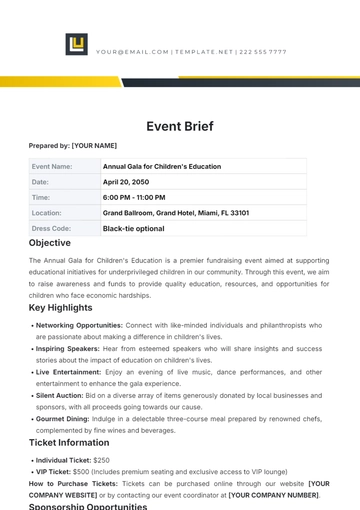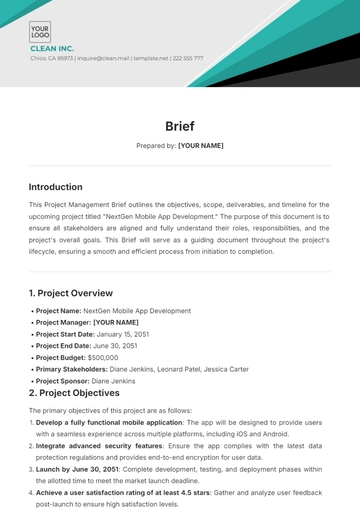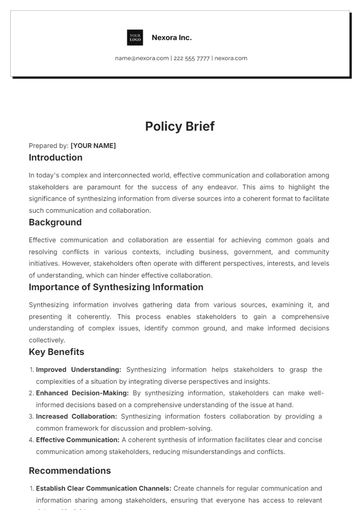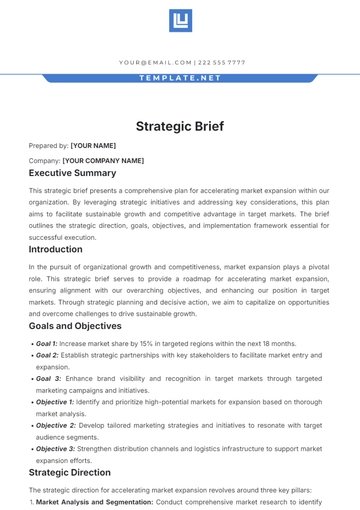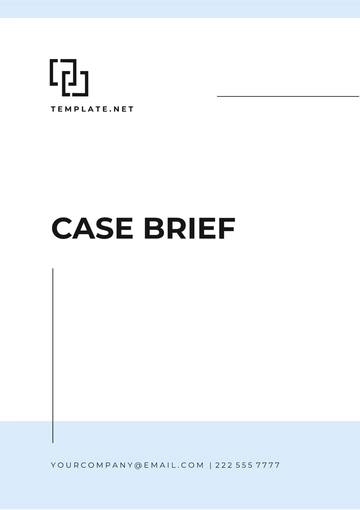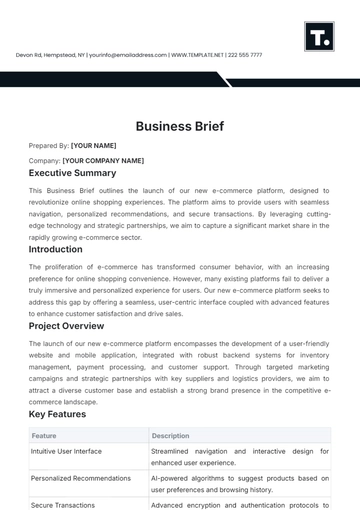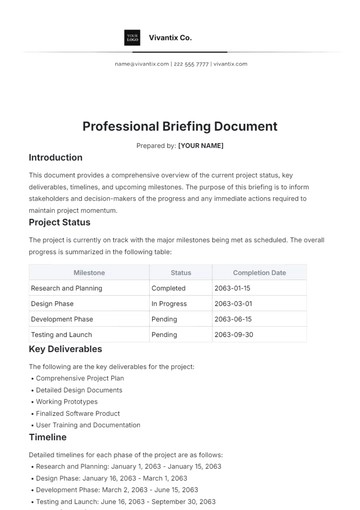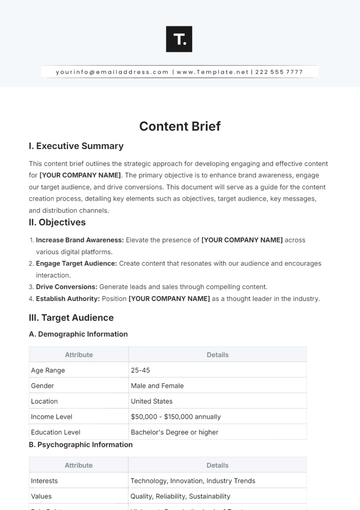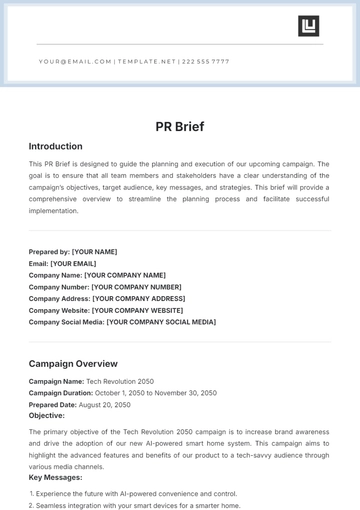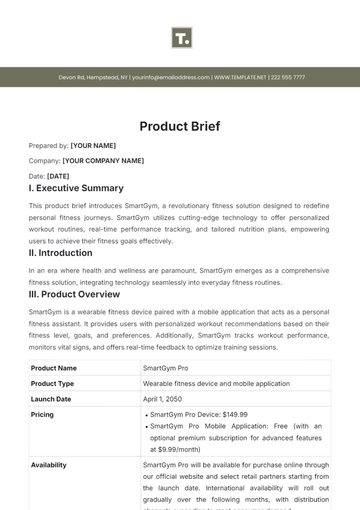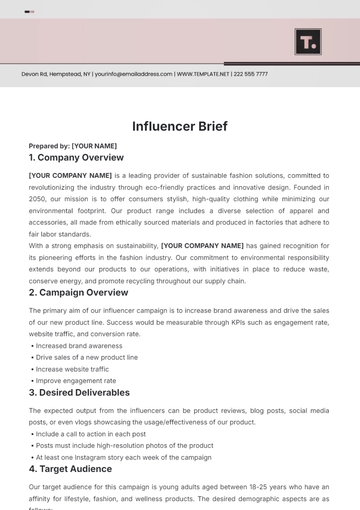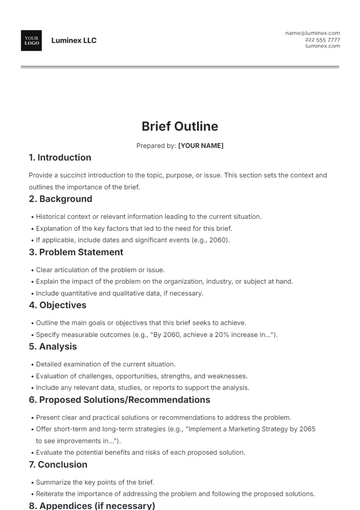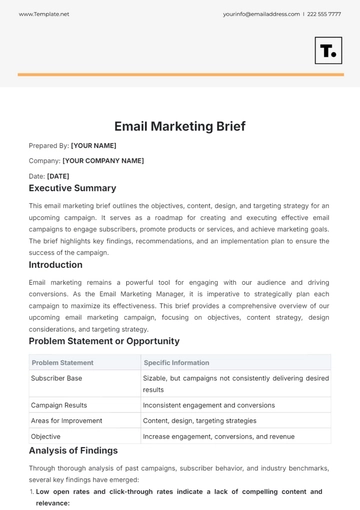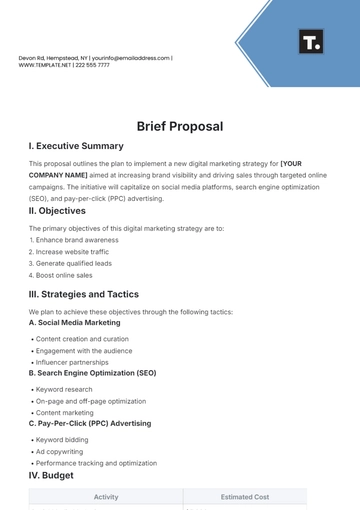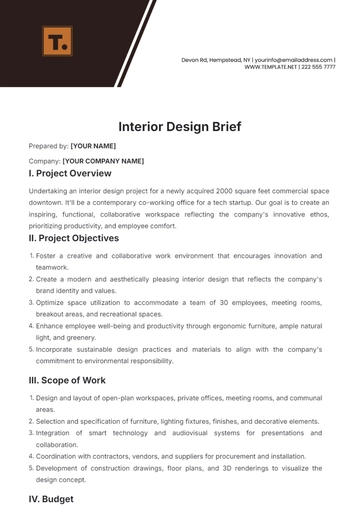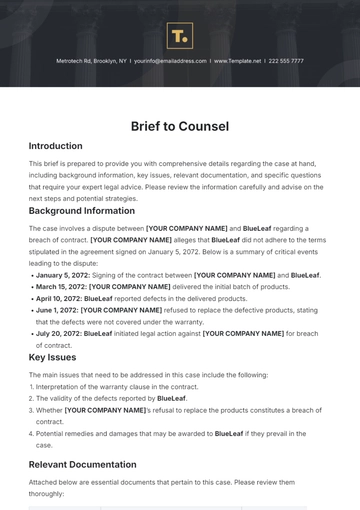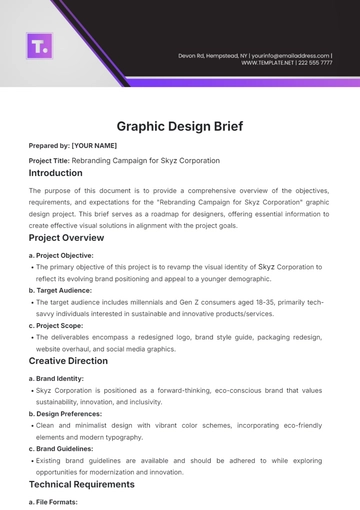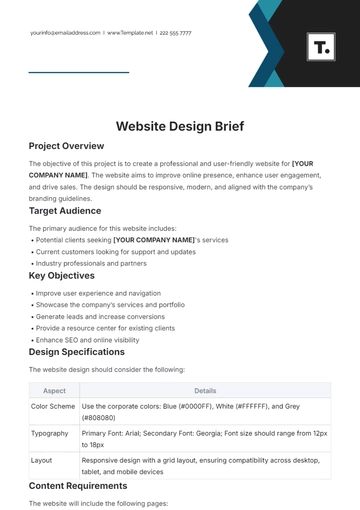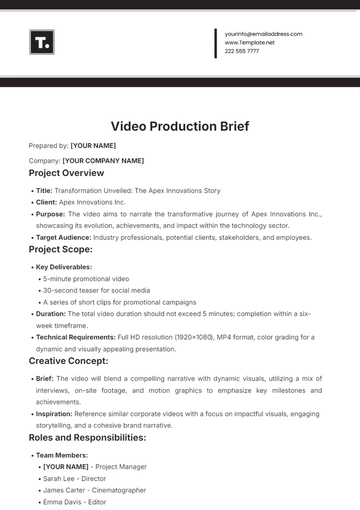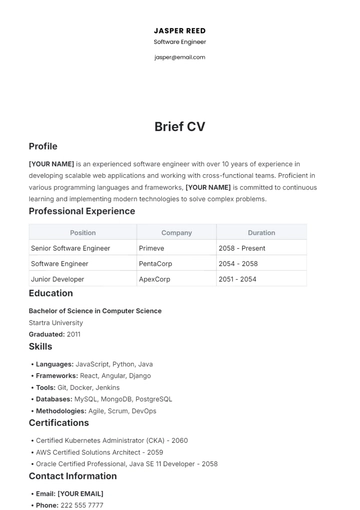PRODUCT GUIDELINES BRIEF
Prepared by: [YOUR NAME]
Company: [YOUR COMPANY NAME]
1. Introduction
This document is designed to delineate the essential practices and standards integral to our product line. It encompasses a comprehensive overview of our design principles, quality standards, material specifications, branding guidelines, and user experience expectations, in addition to addressing any pertinent legal or regulatory considerations.
2. Design Principles
The foundation of our product design philosophy is to deliver solutions that are not only straightforward and accessible but also efficient and effective in meeting our users' needs. Our design principles are centered around:
3. Quality Standards
This table format succinctly outlines the key quality standards each aspect of the product must adhere to, ensuring a clear and accessible reference for the development and quality assurance teams.
Quality Aspect | Standard |
|---|
Functionality | Must operate as designed without any flaws. |
Usability | The user interface should be easy to use and intuitive. |
Performance | The product should be responsive and reliable. |
Supportability | Includes availability of user guides, manuals, and customer support. |
4. Material Specifications
Our commitment to excellence and sustainability is reflected in the stringent criteria we apply to the selection of materials for our product line. To ensure our products are not only of the highest quality but also environmentally responsible and safe, we abide by the following enhanced guidelines:
Selection of Premium Materials:
We insist on using only the highest quality grades of materials, ensuring our products are durable and effective, and deliver exceptional performance.
Environmental Responsibility:
It is our priority to use environmentally friendly materials, promoting sustainability. This includes materials that are recyclable, biodegradable, or derived from sustainable sources, minimizing our ecological footprint.
Safety and Compliance:
All materials selected must be non-toxic, safe for users, and rigorously tested to meet or exceed all relevant industry norms and standards. This ensures not only the safety of our customers but also compliance with global regulatory requirements.
Industry Standards Adherence:
Our materials must strictly comply with the latest industry norms and standards, ensuring our products are recognized for their quality and reliability across markets.
5. Branding Guidelines
By adhering to these guidelines, we aim to cultivate a strong and consistent brand identity that resonates with our audience across every touchpoint.
Logo Consistency:
The use of our logo, including its size, color, and placement, must remain consistent across all products and platforms. This is vital for brand recognition and visual cohesiveness.
Unified Color Scheme and Typography:
A harmonized color scheme and font style are essential across all our communications, digital platforms, and products. This uniformity strengthens our brand identity and enhances user experience by providing a familiar visual environment.
Brand-aligned Product Labeling and Packaging:
The design and messaging on our product labeling and packaging must reflect and reinforce our brand's image and core message. Every element, from the material used for packaging to the style of writing on labels, should contribute to a cohesive brand experience.
6. User Experience Requirements
This table format succinctly outlines the key user experience requirements, ensuring a clear reference for teams involved in product design, development, and user experience strategy.
Requirement | Description |
|---|
Ease of Installation and Use | Products must be straightforward to install and use, accompanied by clear instruction manuals. |
Comprehensive Usability Testing | All products undergo thorough testing for usability issues before release to ensure a smooth user experience. |
Intuitive Product Interface | Product interfaces should be intuitive and user-friendly, facilitating easy navigation and operation by users. |
User Feedback Integration | A structured process for collecting and integrating user feedback must be in place, enabling ongoing improvements and enhancements. |
Brief Templates @ Template.net
